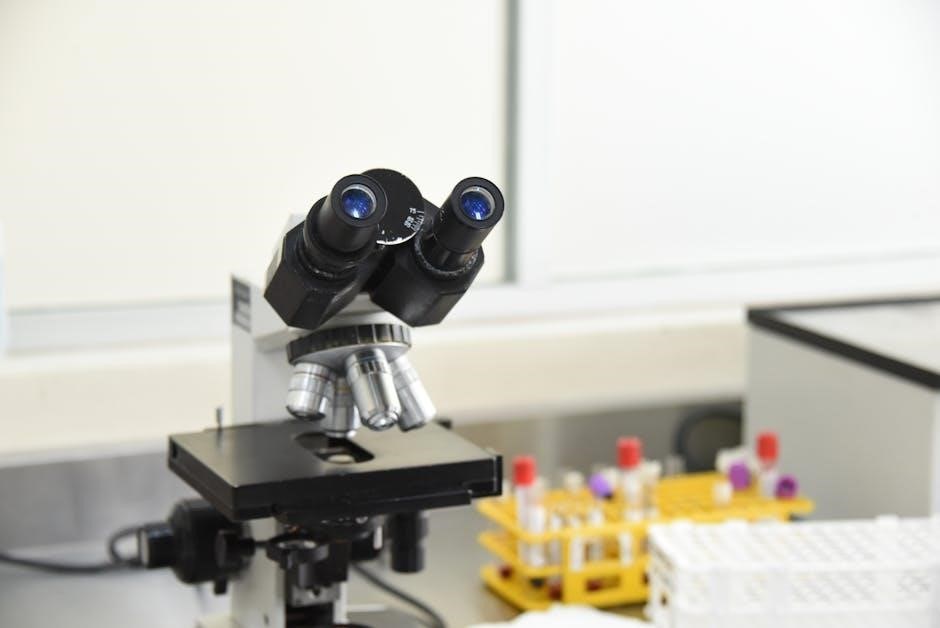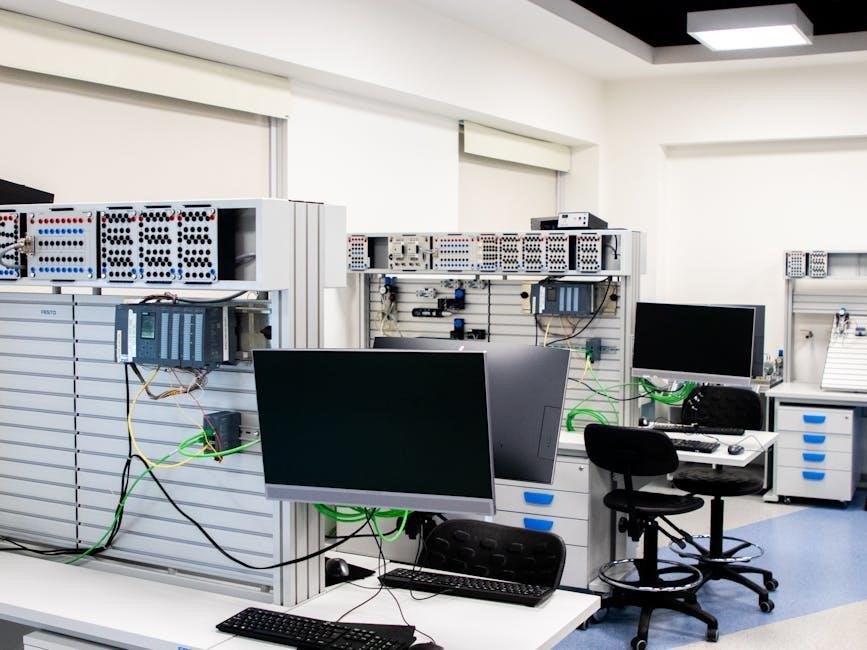Kenmore Elite Dryer Owners Manual: A Comprehensive Guide
Welcome! This manual provides essential guidance for your Kenmore Elite dryer, covering installation, operation, maintenance, and troubleshooting. Discover details about model numbers and safety precautions.
Explore cycle selections, error codes, and recall notices, ensuring optimal performance and longevity for your appliance. Find repair resources and warranty information.
Understand drum capacity, energy efficiency, and ventilation requirements for a seamless drying experience. Locate parts lookup assistance and manufacturing date determination.
Understanding Your Kenmore Elite Dryer
Your Kenmore Elite dryer represents a blend of innovative technology and reliable performance, designed to simplify your laundry routine. This appliance, often manufactured by companies like Whirlpool or LG Electronics, offers a range of features tailored for efficient and gentle fabric care. Understanding its capabilities is key to maximizing its lifespan and achieving optimal drying results.
Kenmore Elite dryers come in various configurations, including gas and electric models, each with specific installation and operational requirements. Familiarizing yourself with the control panel and cycle selection guide is crucial. These dryers boast substantial drum capacities, sometimes reaching up to 9 cubic feet, allowing for larger loads.
Regular maintenance, such as lint filter cleaning, is vital for preventing fire hazards and maintaining airflow. Knowing how to interpret error codes and address common issues, like the dryer not starting or heating, will save you time and potential repair costs. This manual will guide you through these aspects, ensuring a smooth and satisfying ownership experience.
Locating the Model and Serial Number
Identifying your Kenmore Elite dryer’s model and serial number is essential for accessing support, ordering parts, and understanding warranty information. These numbers are crucial for troubleshooting and determining the manufacturing date of your appliance. Typically, you’ll find this information on a sticker or metal plate located within the dryer.
Common locations include inside the dryer door, on the frame behind the door, or on the back panel. The model number usually consists of a series of numbers and letters (e.g., 110.123456), while the serial number is a longer string of characters.
Refer to diagrams and videos available online if you have difficulty locating the tag. Having both numbers readily available will streamline any service requests or parts replacements. Accurate identification ensures you receive the correct assistance and components for your specific Kenmore Elite dryer model.
Decoding the Kenmore Model Number
Understanding your Kenmore Elite dryer’s model number reveals valuable information about its features and, importantly, its original manufacturer. Kenmore appliances are often built by other companies, and the model number acts as a key to identifying this partnership. For example, a Kenmore washing machine model number beginning with ‘110’ typically indicates Whirlpool as the manufacturer.
The number isn’t simply random; its structure provides clues. Different number sequences correspond to specific manufacturing plants and feature sets. While a complete decoding guide isn’t publicly available, recognizing the initial digits can narrow down the possibilities.
Knowing the manufacturer is crucial when sourcing parts, as compatibility varies. Online resources and parts retailers often utilize this information to ensure accurate matches. Decoding the model number empowers you to better understand your dryer and facilitates efficient maintenance and repairs.
Kenmore Dryer Manufacturing Date Determination
Determining the manufacturing date of your Kenmore Elite dryer is often achievable through the serial number. This number, typically found on a sticker or metal plate within the dryer’s housing, holds the key to unlocking its age. While a universal decoding system doesn’t exist, patterns can be identified.
The serial number’s structure often incorporates date-related codes. Examining the initial digits or specific character sequences can reveal the month and year of manufacture. Online Kenmore serial number decoders can assist in this process, providing an estimated production date based on the entered number.
Knowing the dryer’s age is valuable for assessing its remaining lifespan, understanding potential wear and tear, and verifying warranty coverage. It also aids in researching relevant service bulletins or recalls associated with specific production runs.
Using the Serial Number for Age Identification

The serial number is your primary tool for pinpointing your Kenmore Elite dryer’s age. Locate this number – usually on a sticker inside the dryer door or on the back panel. It’s a unique identifier crucial for age determination and accessing specific product information.
While the decoding process isn’t always straightforward, the serial number often contains embedded date codes. These codes, varying by manufacturer (Whirlpool, LG, etc.), indicate the month and year of production. Online resources and dedicated Kenmore serial number decoders can translate these codes.
Inputting your dryer’s serial number into these tools provides an estimated manufacture date. Remember, this is an approximation, but it offers valuable insight into the dryer’s age and potential service history. This information is vital for warranty claims and troubleshooting.
Safety Precautions and Warnings
Prioritize safety! Before operating your Kenmore Elite dryer, carefully review these crucial precautions. Never operate the dryer if it’s damaged or malfunctioning. Disconnect the power supply before any maintenance or cleaning. Ensure proper ventilation to prevent fire hazards – clean the lint filter before each use.
Do not dry items that have been soaked in flammable liquids, like gasoline or cleaning solvents. Keep the surrounding area clear of combustible materials. Supervise children closely when they are near the dryer. Be aware of potential recall notices, particularly concerning gas dryers and faulty gas valves.
Inspect the dryer vent regularly for blockages. A blocked vent significantly increases fire risk. Always follow fabric care label instructions to avoid damage or shrinkage. Ignoring these warnings could result in injury or property damage.
Dryer Features and Controls Overview
Explore your dryer’s capabilities! The Kenmore Elite dryer boasts a range of features designed for optimal fabric care. The control panel offers intuitive cycle selection, allowing you to customize drying based on fabric type and desired dryness level. Familiarize yourself with the various cycle selections, including delicate, permanent press, and heavy-duty options.
Many models feature moisture sensors that automatically adjust drying time, preventing over-drying and saving energy. Additional features may include wrinkle shield options and timed dry settings. Understanding these controls ensures you achieve the best results for every load.
Refer to the cycle selection guide for detailed recommendations. The large drum capacity accommodates substantial loads, enhancing efficiency. Properly utilizing these features extends the life of your clothes and maximizes dryer performance.
Control Panel Explanation
Navigating the interface is simple! The Kenmore Elite dryer’s control panel is designed for user-friendliness. Typically, you’ll find a digital display indicating cycle status and remaining time. A cycle selector dial allows you to choose from pre-programmed settings like ‘Delicates’, ‘Normal’, or ‘Bulky/Sheets’.
Push-buttons control options such as temperature settings (High, Medium, Low, Air Dry), dryness levels (Automatic, More Dry, Less Dry), and special features like ‘Wrinkle Shield’. Indicator lights illuminate to show selected options. The ‘Start/Pause’ button initiates or temporarily halts the drying cycle.

Some models include options for delayed start, allowing you to schedule drying for convenience. Familiarize yourself with each button and indicator to fully utilize the dryer’s capabilities. Refer to the detailed cycle selection guide for specific recommendations.
Cycle Selection Guide

Choosing the right cycle is crucial! The Cycle Selection Guide helps optimize drying for various fabrics. ‘Normal’ is ideal for everyday cottons and linens. ‘Delicates’ uses low heat for lingerie, silks, and other fragile items. ‘Permanent Press’ minimizes wrinkles in synthetic blends.
‘Bulky/Sheets’ accommodates larger items like comforters and blankets. ‘Heavy Duty’ tackles tough loads like towels and jeans. ‘Air Dry’ provides a no-heat fluffing option. Utilize ‘Timed Dry’ for specific drying durations.
Always check garment care labels before selecting a cycle. Over-drying can damage fabrics, while under-drying leaves them damp. Experiment to find the best settings for your laundry needs. Consider load size when choosing a cycle for optimal performance.
Installation Instructions
Proper installation is essential for safe and efficient operation! Begin by carefully unpacking the dryer and inspecting for any shipping damage. Ensure the area is level and has adequate ventilation, adhering to ventilation requirements. Connect the dryer to a dedicated 240V electrical outlet – do not use an extension cord!
Attach the exhaust vent securely, using rigid metal ductwork. Avoid plastic or foil vents, as they pose a fire hazard. Properly ground the dryer according to local electrical codes. Verify gas connections (for gas models) are leak-free.
Refer to the detailed diagrams in this manual for specific instructions. If you are uncomfortable with any aspect of the installation, consult a qualified technician. Incorrect installation can void your warranty information.
Operating Instructions
Familiarize yourself with the control panel! Before each use, sort laundry appropriately. Loading and unloading the dryer should be done with care, avoiding overloading. Select the appropriate cycle selection guide based on fabric type and desired dryness level.
Press the start button to initiate the drying cycle. Monitor the dryer during operation for any unusual noises or smells. Upon completion, promptly remove clothes to prevent wrinkles.
Refer to the drying times and fabric settings chart for optimal results. Avoid drying items that have been exposed to flammable substances. Always clean the lint filter before or after each load to maintain efficiency and safety.
Loading and Unloading the Dryer
Proper loading is crucial! Distribute items evenly within the drum to ensure balanced drying and prevent excessive wrinkling. Avoid overloading, as this restricts airflow and reduces efficiency. Leave sufficient space for clothes to tumble freely – a 9 cubic foot drum doesn’t mean cramming in 9 cubic feet of wet laundry!
Before loading, check pockets for objects that could damage the dryer or become a safety hazard. When unloading, be mindful of hot surfaces. Remove items promptly to minimize wrinkles. Shake out each item before folding or hanging.
Delicate items should be placed in a mesh laundry bag for added protection. Always ensure the dryer is completely stopped before reaching inside.
Drying Times and Fabric Settings
Optimal drying depends on fabric type and load size. Consult the cycle selection guide for recommended settings. Cotton and denim typically require higher heat and longer drying times, while delicates need low heat or air dry. Smaller loads will dry faster than larger ones.
The Kenmore Elite dryer offers various preset cycles, including Normal, Delicate, Heavy Duty, and Timed Dry. Adjust drying time as needed based on your preference and the moisture level of the clothes. A 12-pound cotton load may take 60-70 minutes, while an 8-pound mixed load could take 45-55 minutes.

Avoid over-drying, as this can damage fabrics and cause shrinkage. Use the moisture sensor setting for automatic drying, which stops the cycle when clothes are sufficiently dry.
Maintenance and Cleaning
Regular maintenance ensures optimal performance and extends the life of your Kenmore Elite dryer. The most crucial task is lint filter cleaning – do this after every load to maintain airflow and prevent fire hazards. A clogged filter reduces efficiency and increases drying time.
Periodically, wipe down the dryer’s exterior with a damp cloth and mild detergent. Inspect the vent hose annually for blockages and remove any accumulated lint. Ensure proper ventilation requirements are met for safe operation.
Clean the lint trap housing with a vacuum cleaner attachment. Avoid using water directly on internal components. Following these simple steps will keep your dryer running smoothly and efficiently for years to come, preventing potential troubleshooting issues.
Troubleshooting Common Issues
Encountering problems? Here’s a guide to resolving frequent issues with your Kenmore Elite dryer. If the dryer not starting, check the power cord, circuit breaker, and door switch. A faulty switch prevents operation. For dryer not heating, inspect the heating element and gas supply (for gas models).
Excessive noise during operation often indicates a foreign object in the drum or worn drum rollers. Carefully inspect the drum and replace worn parts. Refer to the parts lookup for replacements.
Consult the understanding error codes section for specific diagnostic information. If issues persist, contact repair resources and support. Always disconnect power before attempting any repairs. Prioritize safety and consult a qualified technician if unsure.
Dryer Not Starting
Is your Kenmore Elite dryer failing to power on? Begin by verifying the power supply; Ensure the dryer is securely plugged into a functioning electrical outlet. Check your home’s circuit breaker or fuse box; a tripped breaker or blown fuse will prevent operation. Reset if necessary.
Next, examine the dryer’s door switch. This crucial component must engage when the door is closed to allow the dryer to start. A faulty door switch is a common culprit. Inspect the switch for damage and test its functionality.
Finally, consider the thermal fuse. If overloaded, it may interrupt power. Consult repair resources or a qualified technician for assistance. Always disconnect power before inspecting any internal components.
Dryer Not Heating
If your Kenmore Elite dryer runs but doesn’t produce heat, several issues could be at play. First, confirm the heating element isn’t burned out. This requires careful inspection – always disconnect power before attempting any internal checks.
A common cause is a faulty thermal fuse or thermostat. These safety devices prevent overheating and will shut off the heating element if they fail. Testing these components with a multimeter is recommended.
Also, inspect the gas valve (for gas dryers) or the heating element wiring (for electric dryers). A blocked vent can also cause overheating and trigger safety shutoffs. Ensure proper ventilation requirements are met. If unsure, consult repair resources or a qualified technician.
Excessive Noise During Operation
Unusual noises from your Kenmore Elite dryer can indicate several potential problems. A common culprit is worn drum support rollers or the idler pulley. These components facilitate smooth drum rotation, and wear can cause squealing or grinding sounds.
Inspect the blower wheel for obstructions like lint or small objects. A damaged blower wheel can create a rattling or whooshing noise. Also, check the motor mounting brackets to ensure they are secure; loose brackets can vibrate excessively.
Foreign objects lodged within the dryer cabinet, such as coins or buttons, can also cause disruptive sounds. Thoroughly inspect the lint trap and drum interior. If the noise persists, consult repair resources or a qualified technician for a more detailed diagnosis and potential parts lookup.
Kenmore Elite Dryer Parts Lookup
Locating replacement parts for your Kenmore Elite dryer is crucial for maintaining its performance. Begin by identifying your dryer’s model number – typically found on a sticker inside the dryer door or on the back panel. This number is essential for accurate parts identification.
Several online retailers specialize in appliance parts, offering a wide selection of components, including belts, rollers, heating elements, and control boards. Utilize the model number during your search to ensure compatibility. Websites often provide diagrams to assist in locating the correct part.
Alternatively, authorized Kenmore service centers can assist with parts lookup and ordering. Remember to verify the part’s specifications before purchasing to guarantee a proper fit and function. Always prioritize genuine Kenmore or compatible parts for optimal reliability.
Understanding Error Codes
Error codes displayed on your Kenmore Elite dryer’s control panel indicate specific issues requiring attention. These codes are the dryer’s way of diagnosing problems, helping you or a technician pinpoint the source of the malfunction. Refer to your owner’s manual for a comprehensive list of codes and their meanings.
Common error codes might relate to heating issues, sensor failures, or motor problems. For example, a code indicating a heating element failure suggests the element needs replacement. Always unplug the dryer before attempting any troubleshooting or repairs.

If you encounter an unfamiliar error code, consult the Kenmore website or contact customer support for assistance. Documenting the code before calling can expedite the troubleshooting process. Ignoring error codes can lead to further damage or safety hazards.
Recalls and Safety Notices (LG Electronics & Kenmore Elite Gas Dryers)
Safety is paramount. It’s crucial to stay informed about any recalls or safety notices affecting your Kenmore Elite dryer, particularly gas models manufactured by LG Electronics. The U.S. Consumer Product Safety Commission (CPSC) frequently announces recalls addressing potential hazards.
A significant recall involved approximately 21,000 LG and Kenmore Elite gas dryers due to a faulty gas valve. This valve could fail to shut off completely, posing a fire risk. Immediately check if your dryer is included in any active recall by visiting the CPSC website.
Registering your appliance with Kenmore allows you to receive direct notifications about recalls and important safety updates. Always follow the manufacturer’s instructions and heed any warnings regarding gas leaks or unusual smells. Prioritize safety and promptly address any potential issues.
Drum Capacity and Performance

Maximize drying efficiency by understanding your Kenmore Elite dryer’s drum capacity. Certain models, like the 81072, boast an impressive 9 cubic feet, accommodating large laundry loads with ease. However, overloading can diminish performance and increase drying times.
Performance evaluations assess drying effectiveness across varied loads – 12lb cotton (jeans, towels), and 8lb mixed fabrics. These tests gauge how well the dryer handles different materials and quantities. A larger drum doesn’t automatically equate to superior performance; cycle selection and sensor accuracy are also vital.

Consider the typical size of your laundry loads when choosing settings. Properly utilizing the drum’s capacity, combined with appropriate cycle selection, ensures optimal drying results and minimizes energy consumption. Refer to the cycle guide for recommended load sizes.

Energy Efficiency Tips
Reduce energy consumption and lower utility bills with these simple tips for your Kenmore Elite dryer. Always clean the lint filter before each load – a clogged filter restricts airflow, forcing the dryer to work harder and longer;
Utilize moisture sensors; these automatically detect when clothes are dry, preventing over-drying and wasted energy. Avoid over-drying clothes, as it’s a significant energy drain. Consider air-drying delicate items or smaller loads whenever possible.
Ensure proper ventilation; a clear vent path allows for efficient exhaust and reduces drying time. Regularly inspect and clean the dryer vent to maintain optimal airflow. Choose appropriate cycle settings based on fabric type and load size for maximum efficiency.

Ventilation Requirements
Proper ventilation is crucial for safe and efficient dryer operation; Your Kenmore Elite dryer must be vented to the outdoors to expel moisture, heat, and combustion gases. Use a rigid metal vent pipe, avoiding plastic or foil types which pose fire hazards.
The vent length should be minimized; shorter, straighter vents improve airflow. Excessive bends or long runs reduce efficiency and increase drying time. Ensure the vent is not crushed or kinked, restricting airflow. Regularly inspect the exterior vent opening to confirm it’s clear of obstructions like bird nests or snow.
Follow local building codes regarding vent termination. Never vent into enclosed spaces or attics. A blocked vent can cause overheating, fire, and carbon monoxide poisoning. Professional installation is recommended for optimal safety and performance.
Lint Filter Cleaning and Maintenance
Regular lint filter cleaning is paramount for dryer safety and performance. Always clean the lint filter before each load to maintain optimal airflow. A clogged filter restricts airflow, increasing drying time and posing a fire hazard. Remove the lint by hand; avoid using brushes or water.
Periodically, wash the lint filter with warm water and mild detergent to remove any buildup from fabric softeners or dryer sheets. Ensure the filter is completely dry before reinstalling. Inspect the lint filter housing for any accumulated lint and vacuum it out as needed.
A clean lint filter reduces energy consumption and prevents overheating. Ignoring this simple maintenance task can lead to costly repairs or even a dryer fire. Prioritize lint filter care for a safe and efficient drying experience.
Repair Resources and Support
Need assistance with your Kenmore Elite dryer? Several resources are available for repairs and support. Begin by consulting this owner’s manual for troubleshooting common issues. For more complex problems, visit the official Kenmore website for FAQs, parts diagrams, and service scheduling.
Authorized Kenmore service technicians can provide in-home repairs. Alternatively, explore online forums and communities dedicated to appliance repair, where you can find advice from experienced users. Model number identification is crucial when seeking support.
Remember to have your dryer’s model number and serial number readily available when contacting support. These numbers help technicians accurately diagnose and resolve your dryer’s issues. Explore parts lookup options for DIY repairs, ensuring compatibility before ordering.
Warranty Information
Your Kenmore Elite dryer is protected by a limited warranty, offering peace of mind against manufacturing defects. The warranty period typically begins on the date of purchase, as verified by your sales receipt. Please retain proof of purchase for warranty claims.
The standard warranty covers parts and labor for one year. Extended warranties may be available for purchase, providing additional coverage for a longer duration. Specific warranty terms and conditions can vary, so carefully review your warranty documentation.
Warranty coverage excludes damage caused by misuse, improper installation, or normal wear and tear. To initiate a warranty claim, contact Kenmore customer support with your model number and serial number. Authorized service centers will handle repairs under warranty.
Kenmore Model Number and Manufacturer Identification (Whirlpool)
Understanding your Kenmore model number is crucial for identifying the original manufacturer and accessing specific parts or service information. Kenmore appliances are often produced by other well-known manufacturers, and Whirlpool is a frequent partner.
A Kenmore model number, like 110.123456, often reveals the manufacturer. In many instances, a Kenmore washing machine or dryer with a number beginning with ‘110’ indicates Whirlpool as the original equipment manufacturer (OEM). This doesn’t affect your Kenmore warranty, but aids in parts sourcing.
To confirm, cross-reference your model number with Whirlpool’s parts databases or contact Kenmore customer support. Knowing the OEM simplifies finding compatible replacement parts and accessing detailed repair guides specific to the Whirlpool-built appliance within the Kenmore brand.
















































































